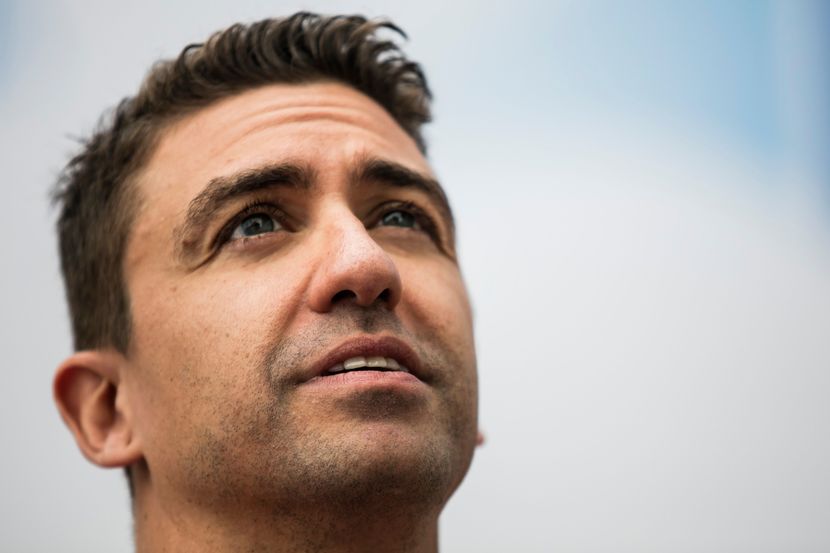
Whenever he swims, Anthony Ervin (USA) doesn’t go unnoticed. With most of the upper part of the body tattooed, he is one of the most recognisable athletes of the planet. And one of the finest swimmers too. And with a longer career. His sport achievements have plenty of superlatives. At 38, he is the second oldest competing star in the second leg of the “FINA Champions Swim Series” in Budapest (HUN). Despite a break of almost 10 years between 2003 and 2012, Ervin has been a privileged witness of swimming’s evolution during the 21stcentury. It all started in 2000, it continues in 2019, and probably it will go until 2020.
At the Sydney Olympic Games, Anthony Ervin is a 19-year-old star, swimming the fastest event of the programme – the 50m free. Together with his compatriot Gary Hall Jr, they touch first for gold. He would be a second time on the podium during those Games, after earning a bronze in the 4x100m free relay. Came the 2001 FINA World Championships in Fukuoka (JPN) and he does even better, with a double victory in the 50m and 100m free. In Barcelona 2003, Ervin is only 17thin his pet event, and from then on, the swimming world has to wait until 2012 to see him again in the pools.
Photo by Giorgio Scala/Deepbluemedia
After getting his qualification in the US Olympic Trials, Ervin competes in the London Games, finishing fifth in the 50m free. His entry in the history books would come four years later, in Rio, when he gets gold in this race, 16 years after his first success at the highest level. In the meantime, he had been an active athlete in the FINA Swimming World Cup series.
2019 marked the launch of the “FINA Champions Swim Series” and Anthony Ervin was naturally invited as the reigning Olympic champion in the freestyle dash. In Guangzhou, in the first leg of the circuit, the US star was fourth in the 50m free.
“I think it’s a good concept. This is what the athletes have been asking for. It provides them additional financial opportunities, a kind of nice return for what we have done and contributed to the Sport”, Ervin confesses. “Most of the swimmers, even with long careers, continue loving what they are doing, so this is a good way for them to move on. The reality of life is that we have to sustain ourselves, some of us even have a family (Ervin is a happy father of a daughter). It is very meaningful for us, to continue doing the sport we love. It’s a very good start. Where it goes, I don’t know…” he continued.
Photo by Giorgio Scala/Deepbluemedia
Asked if this was just a personal feeling or a more general opinion, the US sprinter adds: “From what I was able to talk with the others, they generally like the competition format – four swimmers per final. It’s a bit more streamlined, just four of us, centred in the pool. Properly incentivised, this concept will allow really fast races and some World Records in the future”. And about the change in the pool: “From an aesthetic point of view, the four starting blocks in the centre of pool even look better, with some banners and open water on the sides”.
Anthony Ervin then provides his vision about the evolution of the sport he loves. “Swimming has been gradually opening up. I may have a different vision from most of those guys, as I have been around for more time. Back then, in 2000, there was only the World Cup races. The viability of that circuit grew and we are now at this stage. The important is that swimmers remain satisfied with what they are doing”.
On his own competitive horizon: “I love swimming and feel it is something ancient to me. I feel very lucky and blessed that I am still relevant at my age. But I also know there is more in life than this. If I do leave the water, I’ll find my way back”. Ervin concludes: “I plan to finish elite swimming next summer – whether I make it or not to Tokyo, we’ll see. I’ll do my best, which is all I have ever done. After, maybe I’ll be going to Masters swimming…”